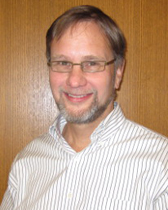Michael Schmitt
Professor

- m-schmitt@northwestern.edu
- Website
- 847-467-6593
- Tech F113
Michael Schmitt's research focuses mainly in two areas: 1) collider physics at the LHC, and 2) muon-to-electron conversion at Fermilab. He also has a small research effort in Type Ia supernovae.
Schmitt has been involved in several collider experiments, including the ALEPH experiment at CERN, the CDF experiment at the Fermilab Tevatron, and the CMS experiment at the CERN LHC since 2016. Schmitt's research group emphasizes the electroweak sector of the standard model as well as searches for new particles and new phenomena not predicted by the standard model.
Current projects include the measurement of the WW and WWW cross sections, both of which provide important tests of theoretical standard model predictions and which might provide evidence for new physics beyond the standard model. Schmitt's group is also exploring the very rare decay of Z bosons to four leptons (branching fraction on the order of a few parts per million) as another test of the standard model and a portal to new non-standard gauge bosons.
Schmitt serves as co-convener of the CMS SMP-Combination group whose mission is to extract values of fundamental constants from LHC measurements and to improve the knowledge of parton distribution functions for the proton.
The proposed high-granularity calorimeter is a revolutionary new device intended as one of the main upgrades for the high-luminosity LHC. Schmitt's group has carried out the main investigations of the timing capabilities of this unique device; these capabilities will enable a much better rejection of unwanted energy depositions which otherwise will degrade the resolution of jet energies and missing transverse momentum.
Schmitt joined the Mu2e Collaboration in 2016. His group is committed to providing an accurate and detailed map of the magnetic field needed for the detection of 105 keV electrons. This map is based on Maxwell's equations and a new type of Bessels function; it uses thousands of Hall probe measurements made in a grid-like pattern inside the magnet.
Schmitt's Mu2e group has studied a potentially harmful background stemming from unwanted magnetic traps and also from pions that scatter in the Mu2e stopping target. Currently they are interested in the μ‾→e+ conversion process.
Selected Publications
CMS Collaboration, "Search for resonances in the mass spectrum of muon pairs produced in association with b quark jets in proton-proton collisions at √s = 8 and 13 TeV", arXiv:1808.01890
Jeffrey M. Berryman, Andre de Gouvea, Kevin J. Kelly, and Michael Schmitt, "Shining light on the mass scale and nature of neutrinos with eγ→eνν Phys. Rev. D98 (2018) 016009
Jessica Lovelace Rainbolt and Michael Schmitt, "Branching fraction for Z decays to four leptons and constraints on new physics", arXiv:1805.05791
CMS Collaboration, "Measurement of differential cross sections in the kinematic angular variable Φ for inclusive Z boson production in pp collisions at √s = 8 TeV", JHEP 03 2018 172
Brian Pollack, Saptaparna Bhattacharya, and Michael Schmitt, "Bayesian Blocks in High Energy Physics: Better Binning made easy!" arXiv:1708.00810
Jessica Lovelace Rainbolt and Michael Schmitt, "The Use of Minimal Spanning Trees in Particle Physics", JINST 12 (2017) P02009
CMS Collaboration, "A study of final-state radiation in decays of Z bosons produced in pp collisions at 7 TeV", Phys. Rev. D91 (2015) 092012
Lovelace Rainbolt, Thoth Gunter and Michael Schmitt, "Using Random Forests to Classify W+W- and ttbar Events", arXiv:1410.8058
